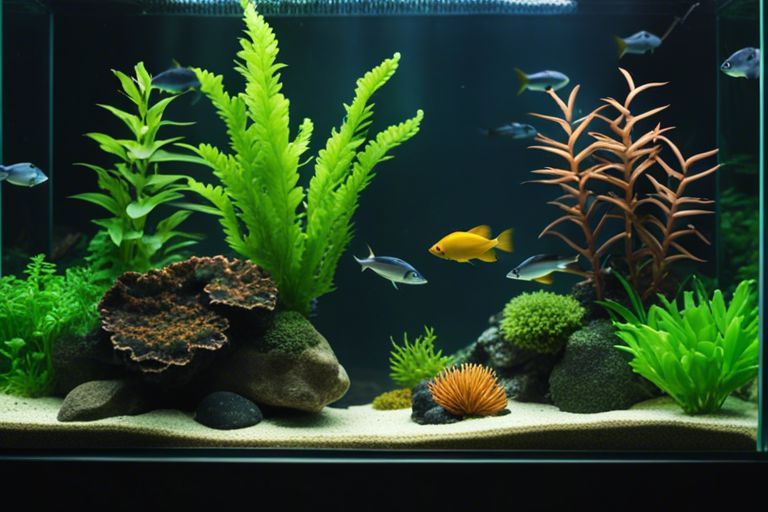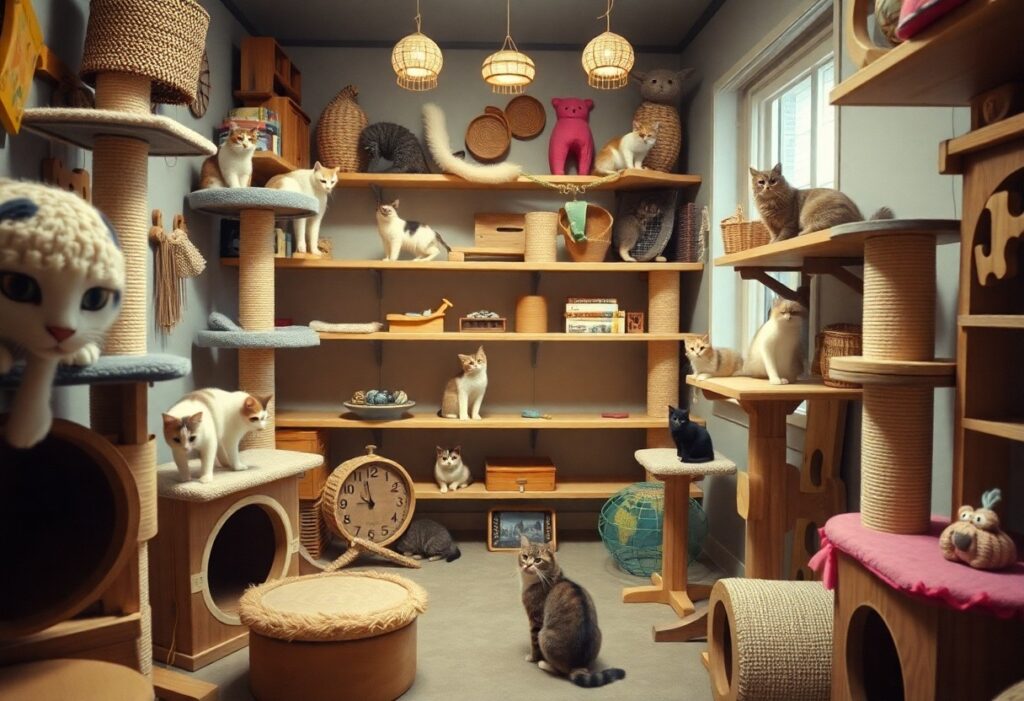The key to a successful and thriving aquarium lies in maintaining a balanced ecosystem within its confines. Just like in nature, an aquarium is a delicate environment where various living organisms coexist, relying on each other for survival. By understanding the importance of water quality, proper feeding, and maintaining the right habitat conditions, you can create a harmonious ecosystem that will keep your aquatic friends healthy and happy. In this blog post, we will look into imperative tips and strategies for ensuring that your aquarium remains a flourishing and well-balanced environment for all its inhabitants.
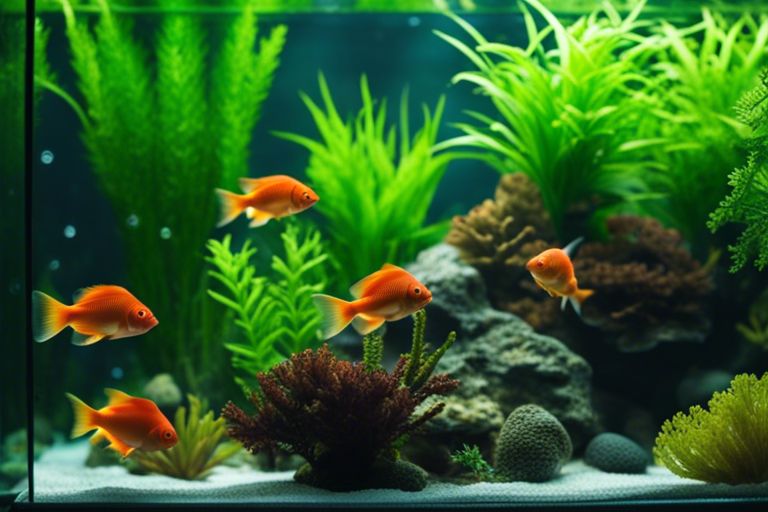
Setting Up Your Aquarium
Choosing the Right Tank
With so many options available, it’s important to choose the right tank size for your aquarium. Consider the types and number of fish you plan to have, as well as the space available in your home. A larger tank is generally more stable and provides a better environment for your aquatic pets. Note, a well-planned setup can lead to a healthier ecosystem.
Selecting Substrate and Decorations
On the topic of substrate and decorations, it’s necessary to choose materials that will benefit your aquarium’s inhabitants. Gravel, sand, or a planted substrate can all be suitable choices depending on the type of fish you have. Decorations like driftwood, rocks, and artificial plants not only enhance the aesthetics of the tank but also provide hiding spots and territories for your fish.
For instance, certain fish species may require a sandy substrate to mimic their natural habitat, while others prefer gravel for burrowing. Live plants can also help maintain water quality by absorbing excess nutrients and providing oxygen. When choosing substrate and decorations, keep in mind the specific needs of your fish to create a balanced and harmonious aquarium ecosystem.
Establishing a Healthy Aquatic Community
Introducing Plants and Animals
Little is more exciting for an aquarium hobbyist than setting up a new tank and introducing a variety of plants and animals. This process can be incredibly rewarding, but it’s crucial to do so carefully to ensure the health and well-being of your aquatic community.
Compatibility and Biodiversity Considerations
The compatibility and biodiversity of the plants and animals in your aquarium are crucial factors to consider when establishing a healthy aquatic community. Considerations must be made regarding the behavior, water parameters, and space requirements of each species to promote a harmonious environment.
This careful consideration helps to prevent aggression between tank mates, reduce stress, and create a balanced ecosystem where each organism can thrive. By selecting species that are compatible with one another and promoting biodiversity within your tank, you can create a vibrant and visually appealing aquatic community.
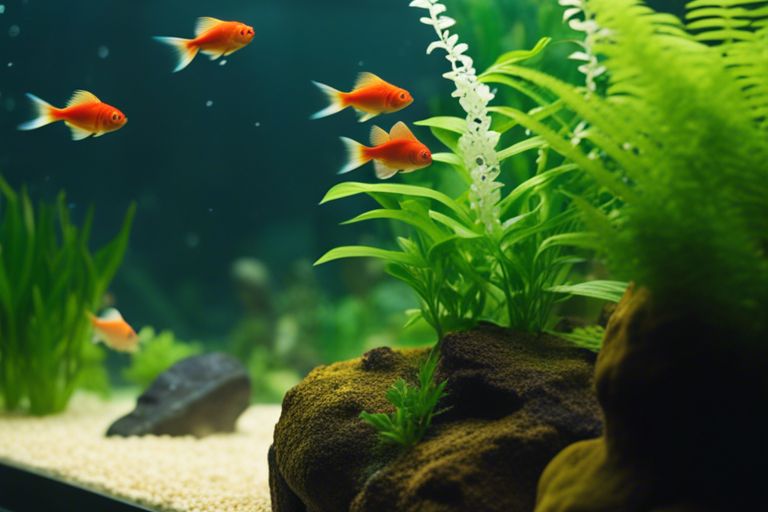
Maintaining Water Quality and Parameters
Filtration and Circulation Systems
Many aquarium enthusiasts understand the importance of quality filtration and proper water circulation in maintaining a healthy aquatic ecosystem. A well-functioning filtration system helps remove debris, excess nutrients, and harmful substances from the water, while promoting gas exchange and oxygenation. Adequate water circulation ensures that all areas of the aquarium receive proper filtration and helps prevent stagnant spots where waste can accumulate.
Testing and Adjusting Water Chemistry
On top of filtration, regularly monitoring and adjusting water chemistry parameters is crucial for the well-being of your aquarium inhabitants. Testing for factors such as pH, ammonia, nitrite, and nitrate levels can provide insight into the overall health of your aquatic environment. Maintaining proper water chemistry through adjustments like water changes and the use of supplements ensures a stable and thriving ecosystem for your fish and plants.
Plus, maintaining a balanced ecosystem also involves monitoring other key parameters such as temperature, salinity (for saltwater tanks), and carbonate hardness (KH) to create optimal conditions for your aquatic pets to thrive.
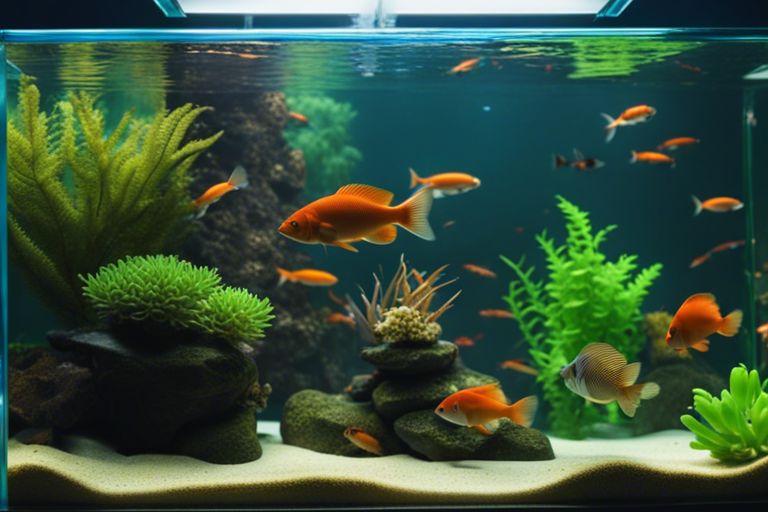
Ongoing Care and Troubleshooting
Feeding and Nutrient Management
Nutrient management is crucial in maintaining a balanced ecosystem in your aquarium. Proper feeding practices, including providing a varied diet and not overfeeding, help prevent nutrient buildup that can lead to algae blooms and water quality issues. Regular water testing can help you monitor nutrient levels and make adjustments as needed to ensure a healthy environment for your aquatic life.
Identifying and Managing Common Issues
Management of common issues in your aquarium involves vigilant observation and quick action. Signs of stress in fish, such as abnormal swimming behavior or discoloration, can indicate underlying problems like poor water quality or disease. By addressing these issues promptly, you can prevent them from escalating and maintain a harmonious ecosystem in your tank.
Troubleshooting potential problems in your aquarium requires a systematic approach. Start by checking water parameters such as temperature, pH, and ammonia levels to rule out any immediate stressors for your aquatic inhabitants. If issues persist, consider factors like overstocking, inadequate filtration, or introducing incompatible species, which can disrupt the delicate balance of your aquarium ecosystem.
To wrap up
So, maintaining a balanced ecosystem in your aquarium is crucial for the health and well-being of your aquatic life. By ensuring proper filtration, regular water testing, and maintaining a consistent feeding schedule, you can create a stable environment where your fish, plants, and other organisms can thrive. Remember to monitor for any signs of imbalance, such as algae overgrowth or water cloudiness, and take prompt action to address any issues that may arise. With dedication and attention to detail, you can enjoy a beautiful and harmonious aquatic ecosystem in your aquarium for years to come.
FAQ
Q: Why is it important to maintain a balanced ecosystem in your aquarium?
A: Maintaining a balanced ecosystem in your aquarium is crucial for the health and well-being of your aquatic inhabitants. It helps mimic their natural habitat, promotes optimal growth and reproduction, and prevents diseases and algae blooms.
Q: How can I ensure water quality in my aquarium ecosystem?
A: To maintain water quality, regularly test and monitor parameters such as ammonia, nitrites, nitrates, pH, and temperature. Perform routine water changes, use a good filtration system, and avoid overfeeding your fish.
Q: What role do plants play in a balanced aquarium ecosystem?
A: Plants play a vital role in maintaining a balanced aquarium ecosystem by absorbing nitrates, producing oxygen, and providing shelter and food for fish. They also help in controlling algae growth and improving water quality.
Q: How can I prevent diseases in my aquarium ecosystem?
A: To prevent diseases, quarantine new fish before introducing them to your main tank, maintain good water quality, avoid overcrowding, and ensure a balanced diet for your fish. Regular observation and early detection of any signs of illness are also key.
Q: What are some common mistakes to avoid when maintaining a balanced aquarium ecosystem?
A: Common mistakes to avoid include overfeeding, neglecting water changes, introducing incompatible species, overstocking your tank, and not providing enough hiding spots for fish. These mistakes can lead to poor water quality, stress, and disease outbreaks.
Q: How can I promote biodiversity in my aquarium ecosystem?
A: To promote biodiversity, consider adding a variety of plant species, fish, and invertebrates to your tank. Create different habitats within the aquarium, such as caves, plants, and open swimming areas, to accommodate different species’ needs.
Q: What are some signs that indicate an unbalanced ecosystem in my aquarium?
A: Signs of an unbalanced ecosystem include algae overgrowth, cloudy water, fish gasping at the surface, abnormal behavior among fish, and declining water quality parameters. Prompt action is necessary to address these issues and restore balance to the aquarium ecosystem.
